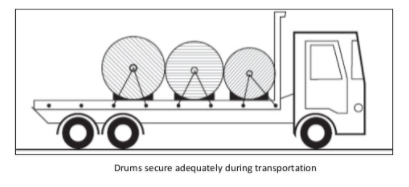With the development of information transmission technology, Long-distance backbone networks and user networks based on OPGW optical cables are taking shape. Due to the special structure of OPGW optical cable, it is difficult to repair after damage, so in the process of loading, unloading, transportation and construction, special attention should be paid to the protection of OPGW optical cable price to avoid damage, damage, etc. The specific requirements are as follows:
(1) After the optical cable arrives at the material station, the supervision department, the project department and the supplier shall jointly accept the inspection and make a record.

(2) Optical cables should be stored upright and 200 mm away from the ground. The storage ground should be dry, solid, and level, and the storage warehouse should be fireproof, waterproof, and moisture-proof.

(3) During transportation, the optical cable reel should be placed upright and supported by skids before being bound firmly. If there is any looseness in the middle, it must be re-bound before transporting.

(4) During transportation, loading and unloading, storage and construction, the wire reel should not be damaged or deformed, and the wire reel should be lightly loaded and unloaded without squeezing or collision.
(5) The spool can be rolled for a short distance, but the rolling direction must be consistent with the winding direction of the optical cable, and the optical cable must not be squeezed or hit during the rolling process.
(6) When the optical cable is sent out from the material station, a comprehensive inspection is required to verify the coil number, line length, start and stop tower number, and then ship to the corresponding construction site after confirming that it is correct.
(7) OPGW optical cable adopts tension pay-off. In a pay-off section, the diameter of the first and last pay-off pulleys must be greater than 0.8 m; for the pitch greater than 600 m or the rotation angle greater than 15. The diameter of the pay-off pulley must be greater than 0.8 m. If there is no single-wheel pulley with a diameter greater than 0.8 m, a double pulley can be used (a single-wheel pulley with a diameter of 0.6 m hanging at two points can be used instead. 0.6 m single wheel block.
(8) The diameter of the pay-off tensioner wheel must be greater than 1.2 m. During the pay-off process, the tension should be controlled and the traction speed should be limited. During the entire deployment process, the maximum pay-off tension of the OPGW fiber optic cable is not allowed to exceed 18% of its calculated guaranteed breaking force. When adjusting the tension of the tension machine, pay attention to the slow increase of the tension to avoid large fluctuations in the tension on the traction rope and the optical cable.
(9) During the construction process, pre-protection measures such as rubber encapsulation shall be adopted for objects and tools in contact with the OPGW optical fiber cable to prevent the optical cable from being abraded.
(10) When fiber optic cable is anchored, use a special cable clamp to connect the anchor line with the rotary connector. The anchor wire rope should be as short as possible.
(11) Try not to bend the optical cable during the construction process, and the necessary bend must meet the minimum bending radius (400 mm during installation and 300 mm after installation).
(12) Since the optical cable is not allowed to be twisted or twisted, it is necessary to use a twist-proof connector to connect when paying off, and use a rotating connector to connect with the traction rope.
(13) When installing cable clamps, fixed clamps, parallel groove clamps and anti-vibration hammers, special torque wrenches must be used to control the clamping force of the clamps on the optical cable.
(14) Before connection, the end of the optical cable must be sealed and protected, and the outer strands of the optical cable must be prevented from spreading.
(15) After the fiber optic cable is tightened, the accessories should be installed immediately, especially the anti-vibration hammer. The stay time of OPGW optical cable on the trolley shall not exceed 24 h.
(16) When installing the optical cable suspension clamp, use a special cable support to lift the optical cable from the pulley, and it is not allowed to directly hook the cable with a hook for lifting.
(17) After the wire is laid out, if it cannot be spliced immediately, the optical cable should be coiled up and fixed in a safe position on the tower to prevent man-made damage.
(18) The bending radius of the fiber optic cable when it is coiled up shall not be less than 300 mm.
(19) When the down conductor of the optical cable is led down from the tower body, a fixed fixture shall be installed every 2 m, and the pre-twisted wire shall be wound to protect the wire at the place where it may rub against the tower body.
Media Contact
Company Name: Guang Lian
Contact Person: Media Relations
Email: Send Email
Phone: +86 7318 9722704
Country: China
Website: https://www.gl-fiber.com/